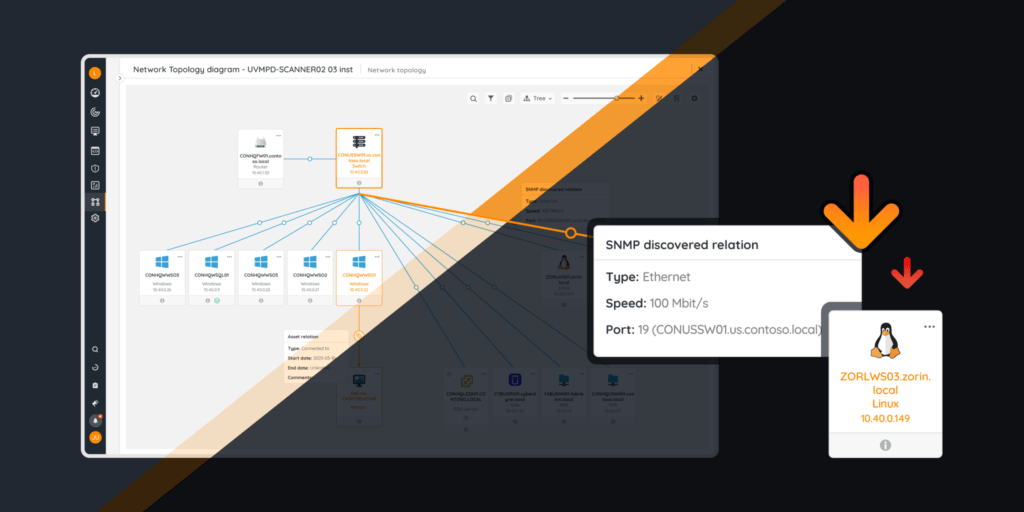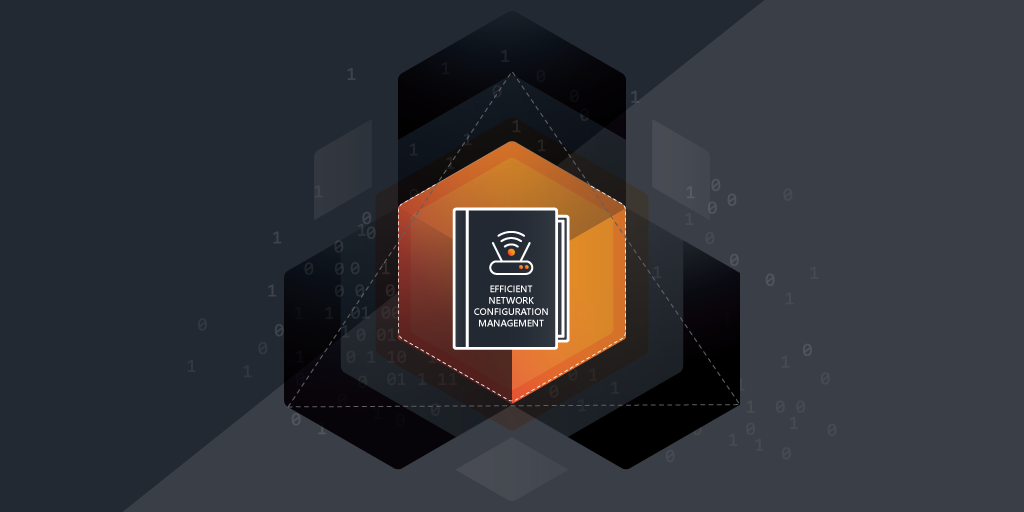
IT asset dependency mapping is a crucial part of IT asset management. It allows you to better understand your network and specifically how your assets interact with each other.
By visualizing the relationships between your IT assets, you can easily spot and troubleshoot issues. Allowing you to make informed decisions about changes, upgrades, and maintenance, and giving you a complete picture of your IT real estate.
What is Dependency Mapping?
IT dependency mapping is the process of identifying and mapping the relationships between different IT systems, applications, and infrastructure components within your organization’s IT estate. This means knowing and understanding how systems and applications relate to each other, as well as the underlying hardware and network infrastructure that supports them.
Dependency mapping consists of three main components to give you a complete overview of your network. This includes all of your hardware, software, and virtual resources.
Hardware or infrastructure mapping shows you the devices that make up your IT infrastructure and their relationships. It allows you to easily spot where assets fit in your network, what they interact with, and how they may impact other devices.
Application mapping shows you the relationship between software components, how they rely on each other, and how they interact to work properly. When interacting with other dependencies, application dependency maps can show you where software is running and what resources they are using.
Virtual environment maps show you the relations and logical grouping of virtual assets and the status of your VMs. It gives you more information on what resources you have and how they are being used.
Why You Need Dependency Mapping.
As IT environments grow larger and more complex, it becomes harder to fully understand the scope and configuration of your organization’s IT. A network consists of a wide range of systems, applications, and hardware, all of them interconnected. Because business-critical technologies often depend on each other, a single change can have consequences on your entire infrastructure.
A solid asset inventory is a good start, but to fully control your IT estate, you need more than just a list of your IT assets. Network mapping goes beyond “What is it?” towards “Where is it?”, “What is it connected to?”, And “how do they interact?” It paints a complete picture of your IT environment adding increased efficiency, analytics, and more effective communication for your teams.
A network mapping tool shows you how everything in your network is connected and interacts with each other. It gives you clear insights into how one link in the chain can affect everything else. That way you can easily spot and troubleshoot problems, streamline IT operations, and better allocate your resources.
Benefits of Dependency Mapping
Are you ready to start mapping your network?
Start your free trial now!More Visibility into Your IT Assets
Due to the size, complexity, and interconnectivity of modern business systems, minimal changes can have far-reaching consequences for application performance. Dependency mapping shows you a clear picture of how your technologies interact. This allows you to closely track changes in your IT environment and anticipate the impact they may have to avoid disruptions in operations.
A Clearer Understanding of Your IT Estate.
The visual representation of your IT estate that you find on a network topology map can give you insights that you may overlook in a classic asset inventory. It allows you to more accurately envision your IT infrastructure. Enriching the view ensures nothing goes unnoticed and it’s easier to understand the impact that changes would have on the rest of your network.
Faster Incident Response
When issues do pop up in your IT environment a quick response is crucial. Longer response times lead to downtime, poor performance, system failures, and frustrated customers. With a comprehensive network topology diagram that shows you your entire IT estate and its dependencies, you can easily spot issues. It also shows you at a glance which hardware, software, and users are impacted, where the source is, and what resources you have at your disposal to alleviate it.
Improved Decision-Making Capabilities
When planning changes to your IT infrastructure, your visual asset dependency maps let you make better-informed decisions. You can better anticipate the impact that each change may have on other systems and applications. You can also more easily find which improvements would be the most beneficial to your operations, and help you decide where best to allocate your resources.
Better Utilization of the Assets You Have
Asset dependency maps can help you get a better understanding of how your assets are being utilized, and specifically, underutilized. Using the data from your asset management tools and dependency maps you can prioritize investments. Optimizing your current infrastructure in the most efficient way possible before making new investments.
Start Mapping Your Dependencies with Lansweeper Diagrams
Lansweeper’s Diagramming feature provides you with automatically generated visual dependency maps of your network topologies and virtual environments. Thanks to the direct link with your Lansweeper inventory, the maps can be updated on the fly as your network changes and grows. Filter, group, and search through your diagrams to personalize your experience and start truly making informed decisions about your IT estate.
IT asset dependency mapping will help you better understand your IT infrastructure. As a visual tool, it gives you direct and easy-to-understand insights into your IT estate that everyone can use. Gain a better understanding of their IT infrastructure and optimize your operations. With the right tools, you and your entire organization can gain a better understanding of your IT infrastructure and take real and effective steps in optimizing your IT operations.
IT asset dependency mapping will help you better understand your IT infrastructure. As a visual tool, it gives you direct and easy-to-understand insights into your IT estate that everyone can use. Gain a better understanding of their IT infrastructure and optimize your operations. With the right tools, you and your entire organization can gain a better understanding of your IT infrastructure and take real and effective steps in optimizing your IT operations.

